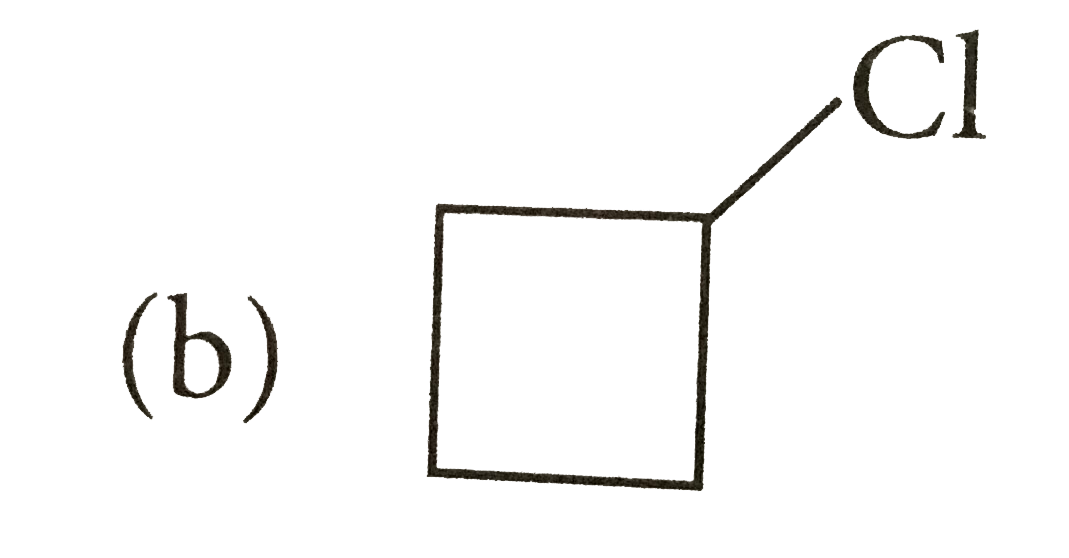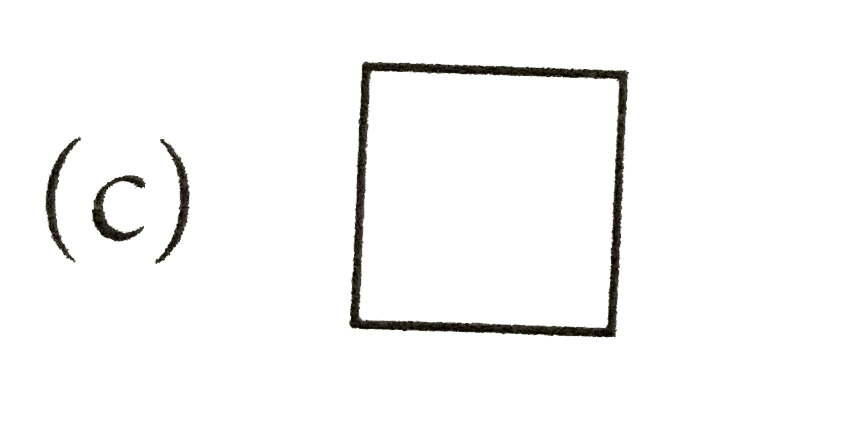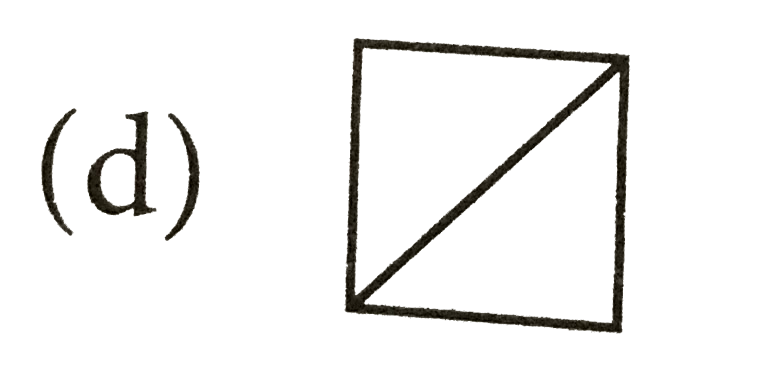Explore topic-wise InterviewSolutions in .
This section includes InterviewSolutions, each offering curated multiple-choice questions to sharpen your knowledge and support exam preparation. Choose a topic below to get started.
| 51851. |
One gram - atom of oxygen is |
|
Answer» 1 G of OXYGEN |
|
| 51852. |
1.00 gm of a mixture having equal number of moles of carbonates of two alkali metals required 44.4 ml of 0.5 N HCl for complete reaction. Atomic weight of one of the metals is 7.00 The number of moles of each metal carbonate in |
|
Answer» `0.1` EQ. `"BASE"_(1)+` eq `"base"_(2)` = eq HCl IMPLIES eq. of each base = 0.0111 implies moles = `(0.0111)/(2)=0.0055` |
|
| 51853. |
(1) Give electronic configuration of the following species and show which of these contain same number of electrons: Cl^(-),N^(3-),P^(3-),K^(+),Na^(+),Mg^(2+),Ar,S^(2-),Ne,O^(2-),Al^(3+),Ca^(2+). (2) In an atom of an inert gas, the difference between the number of p-electrons and s-electrons is equal to the number of d-electrons present in that atom. identify the inert gas and indicate its atomic number. |
Answer» SOLUTION :(1)  So, `N^(3-),Na^(+),Mg^(2+),O^(2-)Ne,Al^(3+)` have the SAMME number of electrons (10), so they are isoelectronic. Electronic configuration of each of them `1S^(2)2S^(2)2p^(6)`. Again, `Cl^(-),P^(3-),K^(+),Ar,S^(2-)` and `Ca^(2+)` have the same number of electrons (18), so they are isoelectronic. their electronic configuration is: `1s^(2)2s^(2)2p^(6)3s^(2)3p^(6)` (2) The inerrt gas is krypton (Kr) whose atomic number is 36, has electronic configuration: `1s^(2)2s^(2)2p^(6)3s^(2)3p^(6)3d^(10)4S^(2)4p^(6)` Total number of s-electrons=8 and total number of p-electrons=18 `therefore`Difference in the number of s and p- electrons `therefore`Difference in the number of s and p-electrons=18-8=10=number of d-electrons. |
|
| 51854. |
1 g of X has atoms arranged in cubic packing so as to give best packing efficiency. The possible arrangement is |
|
Answer» SIMPLE cubic |
|
| 51855. |
1 g of the complex [Cr(H_(2)O)_(5)Cl]Cl_(2). H_(2)O was passed through a cation exchanger to produce HCl. The acid liberated was diluted to 1 litre. What is the normality of this acid solution ? |
|
Answer» |
|
| 51856. |
1 g of Mg is burnt in a closed vessel containing 0.5 g of O_(2). Which of the following statements is correct ? |
|
Answer» `O_(2)` is the limiting REAGENT and Mg is in excess by 0.25 g 48 g of Mg require `O_(2)=32` g 1g of Mg require `O_(2)=(32)/(48) = 0.66 g` `O_(2)` actually AVAILABLE = 0.5 g This MEANS that `O_(2)` is the limiting reactant 0.5 g of `O_(2)` will react with `Mg = (48)/(32) XX 0,5 = 0.75 g` Excess of `Mg = 1 -0.75 =0.25 g`. |
|
| 51857. |
1 g of hydrogen is found to combine with 80g of bromine and 1g of calcium combines with 4 g of bromine. Equivalent weight of calcium is |
|
Answer» 16 Equivalent WEIGHT of `Br_(2)` = 80 4g of `Br_(2)` combine with = 1g Ca `therefore` 80 g of `Br_(2)` will combine with (`=1 xx 80)/4 = 20g Ca |
|
| 51858. |
1 g of graphiteis burnt in a bombcalorimeter in excess of oxygen at 298 K and 1 atmosphericpressure accordingto the equation C ( graphite ) + O_(2)(g) rarr CO_(2)(g) During the reaction, temperature rises from298K to 299 K. If the heat capacity ofthe bomb calorimeter is 20.7 kJ // K , what is the enthalpy change for the above reaction at 298K and 1 atm ? |
|
Answer» Solution :Rise in TEMPERATURE of the calorimeter `= 299- 298K = 1K` Heat CAPACITY of the calorimeter `= 20.7 k J K^(-1)` `:. `Heat absorbed by the calorimeter `= C_(v) xxDelta T= (20.7 k J K^(-1)) (1K) = 20.7 kJ` This s the heat evolved in the combustionof1 g of graphite. `:. `Heat evolved inthe combustionof 1 MOLE of graphite , `i.e., 12g` of graphite `= 20.7 xx 12 kJ = 248.4 kJ` As this is the heat evolved and the vessel is CLOSED, therefore, enthalpy change of the reaction `( Delta U )` `= - 248.4 kJ mol^(-1)` |
|
| 51859. |
1 g of graphite is burnt in a bomb calorimeter in excess of oxygen at 298 K and 1 atmospheric pressure according to the equation C_("(graphite)") + O_(2(g)) to CO_(2(g)) During the reaction, temperature rises from 298 K to 299 K. If the heat capacity of the bomb calorimeter is 20.7 kJ/K, what is the enthalpy change for the above reaction at 298 K and 1 atm ? |
|
Answer» Solution :Suppose q is the quantity of heat from the reaction MIXTURE and `C_(V)` is the heat capacity of the calorimeter, then the quantity of heat absorbed by the calorimeter : `q=C_(v) xx Delta T` Quantity of heat from the reaction will have the same magnitude but opposite SIGN because the heat lost by the system is equal to the heat gained by the calorimeter. `q=-C_(v) xx Delta T` `=-20.7 "kJ/K" K xx (299- 298) K = -20.7 "kJ"` Here, negative sign indicates the exothermic nature of the reaction. THUS, `Delta U` for the combustion of the 1g of graphite `= -20.7 "kJ K"^(-1)` For combustion of 1 MOL of graphite, `= (12.0 g "mol"^(-1) xx (-20.7 "kJ") )/(1g)` `= -2.48 xx 10^(2) "kJ mol"^(-1)` since `Deltan_(g) =0` `therefore Delta H = Delta U = - 2.48 xx 10^(2) "kJ mol"^(-1)` |
|
| 51860. |
1 g of graphite is burnt in a bomb calorimeter in excess of O_(2) at 298 K and 1 atm. Pressure according to the equations. C_("graphite")+O_(2(g)) to CO_(2(g)) During the reaction the temperature rises from 298 K to 200K. Heat capacity of the bomb calorimeter is 20.7KJK^(-1). What is the enthalpy change for the above reaction at 298 K 1 atm? |
|
Answer» Solution :`q = C_v xx Delta` Quantity of heat from the reaction will have the same magnitude but opposite sign because the heat lost by the system (reaction mixture) is equal to the heat gained by the calorimeter `q= - C_v xx DeltaT = -20.7kJ//K xx (299-298) K = -20.7kJ ` For combustion of 1 MOL of GRAPHITE `DeltaE = -2.48 xx 10^2 kJ mol^(-1)` `DeltaH = DeltaE = -2.48 xx 10^2 kJmol^(-1)`, SINCE `Deltan = 0`. |
|
| 51861. |
1 g of an impure sample of magnesium carbonate (containing no thermally decomposable impurities) on complete thermal decomposition gave 0.44 g of carbon dioxide gas.To percentage of impurity in the sample is…........... |
|
Answer» 0 `MgCO_(3):(1xx24)+(1xx12)+(3xx16)=84 g` `CO_(2):(1xx12)+(2xx16)=44 g` 100% pure 84 g `MgCO_(3)` on heating GIVES 44 g `CO_(2)` Given that 1 g of `MgCO_(3)` on heating gives `0.44 g CO_(2)` Therefore, 84 g `MgCO_(3)` sample on heating gives `36.96 g CO_(2)=84%` Percentage of purity of the sample =`(100%)/(44 g CO_(2))xx36.96 g CO_(2)=84%` Percentage of impurity=16% |
|
| 51862. |
1 g of an impure sample of magnesium carbonate (containing no thermally decomposable impurities) on complete thermal decomposition gave 0.44 g of carbon dioxide gas. The percentage of impurity in the sample is |
|
Answer» 0 `MgCO_(3): (1xx24) + (1xx12) + (3xx16)=84g` 100% PURE 84 g of `MgCO_(3)` on heating gives 44g `CO_(2)` Given that 1g of `MgCO_(3)` on heating gives 0.44g `CO_(2)` Therefore, 854 g `MgCO_(3)` SAMPLE on heating gives 36.96 g `CO_(2)` Percantaqge of PURITY of the sample= `(100%)/(44 g CO_(2)) xx36.96g CO_(2)` =84% Percentage of impurity=16% |
|
| 51863. |
1 g of a metal required 50 mL of 0.5 N HCl to dissovle it. The equivalent mass of the metal is : |
|
Answer» 25 |
|
| 51864. |
1 g of a mixture containing equal no.of moles of carbonates of two alkali metals, required 44.4 mL of 0.5 N HCl for complete reaction. The atomic weight of one metal is 7, find the atomic weight of other metal. Also calculate amount of sulphate formed on quantitative conversion of 1.0g of the mixture in two sulphates. |
|
Answer» |
|
| 51865. |
1 g of a carbonate (M_2CO_3) on treatment with excess HCl produces 0.01186 mole of CO_2. The molar mass of M_2CO_3 is g "mol"^(-1) : |
|
Answer» 1186 |
|
| 51866. |
(1) Consider the following cases- The nature of flow of energy in case (I) is same as that in- (A) II , (B) III , (C ) II and III, (D) None |
| Answer» Solution :(D) None, Because in `II` and `III`, the flow of ENERGY or MATTER is taking place only in one direction.While in EQUILIBRIUM STATE, the flow of energy takes place in both DIRECTIONS equally. Thus `(I)` is a dynamic equilibrium while states in `II` and `III` are called steady state (static equilibrium). | |
| 51867. |
1 cm^(3) of 0.01 N HCl is added to one litre of sodium chloride solution . What will be the pH of the resulting solution ? |
|
Answer» SOLUTION :As NaCl solution is neutral, it simply dilutes the HCL solution from 1 CC to 1000 cc. Now `[H^(+)]=0.01//1000=10^(-5)M :. pH = 5`. |
|
| 51868. |
1-Chlorobutane on reaction with alcoholic potash gives |
|
Answer» 1-Butene |
|
| 51869. |
1-Butyne reacts with KMnO_4//OH//Delta to give |
|
Answer» `CH_3-CH_2 - CH_2 - COOH` |
|
| 51870. |
1-Butyne reacts with hot alkaline KMnO_4 to produce |
|
Answer» `CH_3CH_2CH_2COOH` |
|
| 51871. |
1-Butyne can be converted into 1- bromo-1 -butene by reacting it with which of the following reagent ? |
|
Answer» HBR |
|
| 51872. |
1-butylene reacts with cold alkaline KMnO_(4) to produce |
|
Answer» `CH_(3)CH_(2)COOH` |
|
| 51873. |
1-Butene may be converted to butane by reaction with : |
|
Answer» `Zn-Hg` |
|
| 51874. |
1-"Butene"+HBrunderset(hupsilon)overset(H_(2)O_(2))rarr 1-Bromobutane. This reaction is based as |
|
Answer» MARKOWNIKOFF's RULE |
|
| 51875. |
1-Butene and cyclobutane show |
|
Answer» POSITION isomerism |
|
| 51876. |
1-butene cannot show geometrical isomerism. |
|
Answer» |
|
| 51877. |
1-Butanol is heated withconcentrated sulphuricacidat 443 k. |
Answer» SOLUTION :But-2-eneis OBTAINED asthemajorproduct. Firstn-butyl `(1^(@))` carbocationis formed. Thisbeinglesssstablerearranges to a morestable `2^(@)` CARBOCATION whichsubsequently losesa protonto formbut-2-ene inaccordance withSaytzeff rule. `underset(("More stable "))underset(2^(@) "Butyl carbocation ")(CH_(3)-CH_(2) -OVERSET(+)(CH) -CH_(3)) overset(-H^(+))underset(("Saytzeff elimiN/Ation"))(to) underset("But -2-en (80 %)")(CH_(3)CH =CHCH_(3))+ underset("But -1-ene (20%)")(CH_(3) CH_(2) CH=CH_(2)` |
|
| 51878. |
1-bromo-3-chlorocyclobutane when treated with two equivalents of Na, in the presence of ether which of the following will be formed ? |
|
Answer»

|
|
| 51879. |
1-Bromo-3-chlorocyclobutane is treated with two equivalents of Na, in the presence of ether. Which of the following compounds will be formed. |
|
Answer»
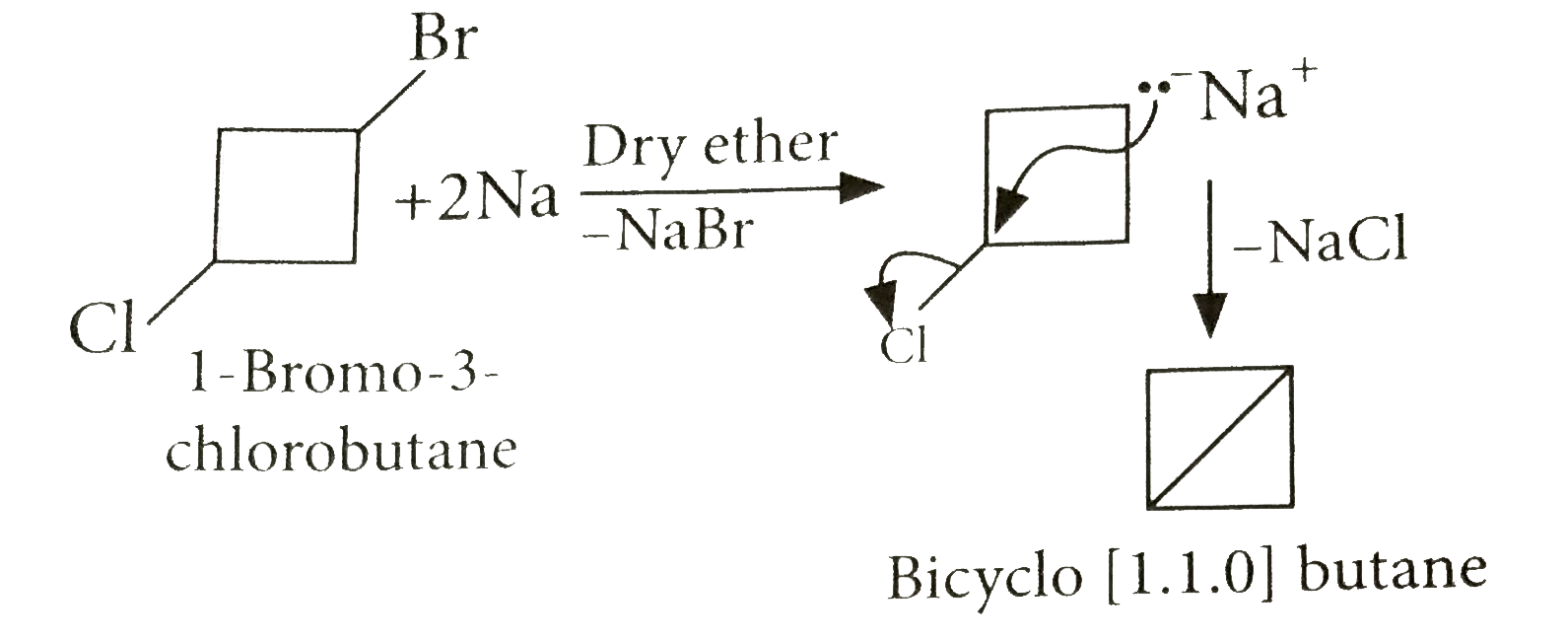
|
|
| 51880. |
1-Bromo-3-chlorocyclobutane is treated with two equivalents of Na, in the presence of either. Which of the following will be formed? |
|
Answer»

|
|
| 51881. |
1 bar means …….. Pa ? |
|
Answer» Solution :1 BAR `= 10^(5)` Pa It is ATMOSPHERIC PRESSURE of sea level. |
|
| 51882. |
1 BM is equal to: |
| Answer» Answer :A | |
| 51883. |
1 amu is ........... part of atomic mass of one C atom. |
|
Answer» `1/2` |
|
| 51884. |
(1 ) Among the alkaline earth metals BeO is insoluble in water but other oxides are soluble. Why? (ii) State Diffusion Law. |
|
Answer» SOLUTION :Lattice energy of BEO is comparatively higher than the hydrogen energy . Therefore it is almost insoluble in water. Whereas other alkaline earth metals oxides have high ? Ydration energy. Hence they are soluble in water. (ii)Diffusion is the spreading of molecules of a substance throughout ·a space or a second substance. Diffusion REFERS to the ~bility of the gases to mix with each other. E.g., Spreading of something such as brown tea LIQUID spreaqing through the water in a tea cup |
|
| 51885. |
1-4-dichlorohexane (1 mole ) +Nal (1"mole" ) overset("Acetone ")toproduct of the reaction is : |
|
Answer» `CL-CH_(2)-CH_(2)-UNDERSET(I)underset(|)CH-CH_(2)-CH_(3)` 
|
|
| 51886. |
1, 3-butadiene + maleic acidto X |
|
Answer»
|
|
| 51887. |
(1)/(2)N_(2)(g)+O_(2)rarrNO_(2)(g),Delta_(r)H^(@)=-40KJ//mol Given: C_(P.m)(NO_(2),g)=40J//mol//K,C_(p,m) (O_(2),g)=30JK^(-1)mol^(-1) C_(P,m)N_(2)(g)=30JK^(-1)mol^(-1) What is the enthalpy of formation of NO_(2)(g) at 1298K ? |
|
Answer» <P>`-40KJ//mol` At `1298KDelta_(r)H=-40KJ-5` `DeltaT=-40KJ-5xx1000xx10^(-3)KJ=-45KJ//mol` |
|
| 51888. |
Given that (1)/(2)S_(8(s)) + 6O_(2(g)) rarr 4SO_(3(g)), Delta H^(0) = - 1590kJ. The standard enthalpy of formation of SO_(3) is |
|
Answer» `-1590 KJ MOL^(-1)` |
|
| 51889. |
1/2H_(2(g)) + 1/2I_(2(g)) hArr HI_((g)) in this equilibriumwhat is the relation between K_c and K'_c |
| Answer» SOLUTION :`K_c=1/(K._c)` | |
| 51890. |
1/2 litre of 2xx10^(-3) M AlCl_3 and 1/2 litre of 4 xx 10^(-2) M solution of NaOH are mixed and the solution is diluted to 10^2 litres with water at room temperature. Will a precipitate form ? Given K_(sp)Al(OH)_3=5xx10^(-33) |
|
Answer» Solution :The solubility equilibrium of `Al(OH)_3` is `Al(OH)_3 hArr Al^(3+) + 3OH^(-)` On mixing `1/2` litre of `AlCl_3`and `1/2` litre of NaOH, the total solution is made `10^2` litres by adding WATER. Concentration of `AlCl_3=(2xx10^(-3))/10^2 xx1/2=1xx10^(-5)` M Concentration of NaOH =`(4xx10^(-2))/10^2 xx1/2=2xx10^(-4)` M Since `AlCl_3` IONISES as : `AlCl_3 hArr Al^(3+) +3Cl^-` `[Al^(3+)]=[AlCl_3]=1xx10^(-5)` M Since NaOH ionises as : `NaOH hArr NA^(+) + OH^(-)` `[OH^-]=[NaOH]=2xx10^(-4)` Now, ionic product =`[Al^(3+)][OH^-]^3` `=1xx10^(-5)xx(2xx10^(-4))^3 =8xx10^(-17)` As the product the concentration of IONS of the salt is more than `K_(sp)`, the salt will be precipitated . |
|
| 51891. |
(1)/(2) H_(2(g)) + (1)/(2) Cl_(2(g)) rarr HCl_((g)) , Delta H^(0) = - 92.4 kJ/mole, HCl_((g)) + nH_(2)O rarr H_((aq))^(+) + Cl_((aq))^(-) , Delta H^(0) = -74.8 kJ/mole Delta H^(0)f for Cl_((aq))^(-) is |
|
Answer» `-17.6` kJ/mole `Delta H = Delta H_(f_(Cl^(-))) - Delta H_(f_(HCL))` `-74.8 = Delta H_(f_(HCl)) - (-92.4) rArr Delta H_(f_(HCl)) = -167.2` |
|
| 51892. |
(1)/(12)the mass of .C-12. atom is equal to |
|
Answer» AMU |
|
| 51894. |
0.9g of an organic compound gave on combustion: (i) 1.584g CO_(2) (ii) 0.648g H_(2)O When 0.24g of the substance was Kjeldahlised and the ammonia formed was absorbed in 50 cm^(3) of (N)/(2)H_(2)SO_(4). The excess acid required 77 cm^(3) of N//10NaOh for complete neutralization. Molecular mass of the compound is estimated to be 100. Molecular formula of the compound will be: |
|
Answer» `C_(8)H_(4)NO_(2)` |
|
| 51895. |
0.9g of an organic compound gave on combustion: (i) 1.584g CO_(2) (ii) 0.648g H_(2)O When 0.24g of the substance was Kjeldahlised and the ammonia formed was absorbed in 50 cm^(3) of (N)/(2)H_(2)SO_(4). The excess acid required 77 cm^(3) of N//10NaOh for complete neutralization. Molecular mass of the compound is estimated to be 100. The compound has maximum percentage composition of which of the following elements? |
|
Answer» C |
|
| 51896. |
0.9g of an organic compound gave on combustion: (i) 1.584g CO_(2) (ii) 0.648g H_(2)O When 0.24g of the substance was Kjeldahlised and the ammonia formed was absorbed in 50 cm^(3) of (N)/(2)H_(2)SO_(4). The excess acid required 77 cm^(3) of N//10NaOh for complete neutralization. Molecular mass of the compound is estimated to be 100. Which among the following is the empirical formula of the compound? |
|
Answer» `C_(8)H_(4)NO_(2)` |
|
| 51897. |
0.9g of an organic compound gave on combustion: (i) 1.584g CO_(2) (ii) 0.648g H_(2)O When 0.24g of the substance was Kjeldahlised and the ammonia formed was absorbed in 50 cm^(3) of (N)/(2)H_(2)SO_(4). The excess acid required 77 cm^(3) of N//10NaOh for complete neutralization. Molecular mass of the compound is estimated to be 100. Percentage composition of nitrogen in the compound will be: |
|
Answer» 16 |
|
| 51898. |
An impure sample of sodium chloride which weighed 1.2 g gave on treatment with excess of silver nitrate solution 2.4g of silver chloride as precipitate.Calculate the percentage purity of the sample |
|
Answer» Solution :The double DECOMPOSITION reaction involved is: `NaCl(aq) + AgNO_(3)(aq) to NaNO_(3)(aq) + AgCl(s)` Mass of NaCl taken = 0.989 g Mass of AgCl formed = 2.42 g Using the relation `("Mass of NaCl")/("Mass of AgCl") = ("EQUIVALENT WEIGHT of NaCl")/("Equivalent weight of AgCl") =("Eq. weight of Na + Eq. weight of Cl")/("Eq. weight of Ag + Eq. weight of Cl")` and substituting the values, we GET `0.989/2.42 = ("Eq. mass of Na" + 35.5)/(108 + 35.5)` `=(0.989/2.43 xx 143.5) - 35.5 = 58.4- 35.5 = 22.9` |
|
| 51899. |
0.9g of an organic compound gave on combustion: (i) 1.584g CO_(2) (ii) 0.648g H_(2)O When 0.24g of the substance was Kjeldahlised and the ammonia formed was absorbed in 50 cm^(3) of (N)/(2)H_(2)SO_(4). The excess acid required 77 cm^(3) of N//10NaOh for complete neutralization. Molecular mass of the compound is estimated to be 100. What is the percentage composition of carbon in the compound? |
|
Answer» 0.16 |
|
| 51900. |
0.96g chloroplatinate of a diacid base when ingnited gave 0.32 g platinum. The molecular mass of the base is [AW of Pt = 195] |
|
Answer» 175 `(0.96)/(ZE+410)=(0.32)/(195)RARR E = (175)/(2)` `MW=Z xx E` since it is diacidic base `therefore MW = Z xx (175)/(2)=175` |
|




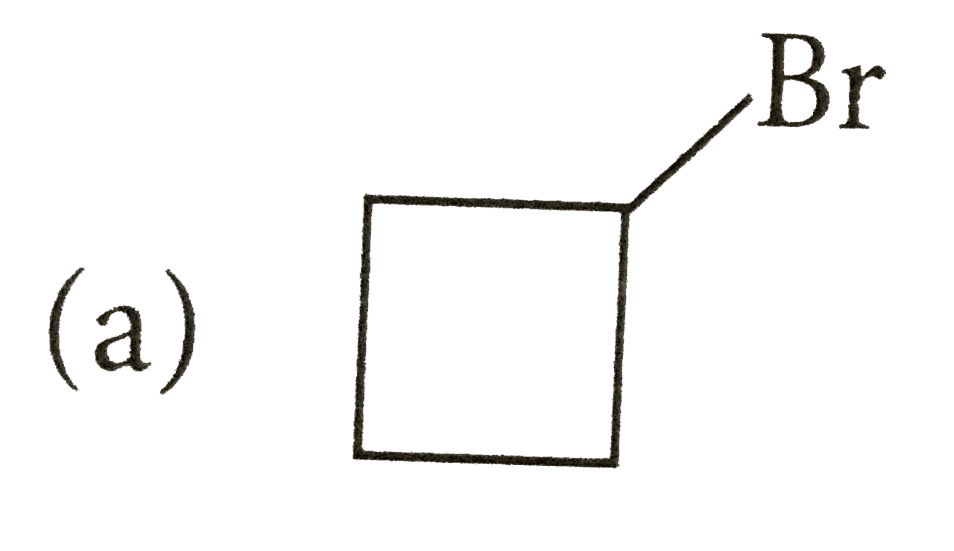 <
<